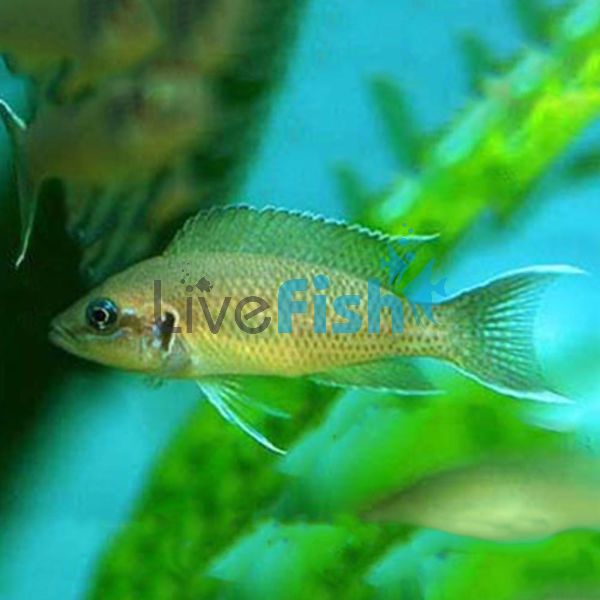Princess Cichlid 2.5cm
The Princess Cichlid is one of the first African cichlids aquarists get for their aquarium, the smaller size, flowing fins, simple coloration, and peaceful behaviour make them a fantastic and under-rated species. These cichlids look stellar when full-grown with their almost regal look which is why so many aquarists fall in love at first sight. These will make for a great species to keep in a large colony species-only setting or a mixed Tanganyikan aquarium.
Princess Cichlid
The Princess Cichlid is one of the first African cichlids aquarists get for their aquarium, the smaller size, flowing fins, simple coloration, and peaceful behaviour make them a fantastic and under-rated species. These cichlids look stellar when full-grown with their almost regal look which is why so many aquarists fall in love at first sight. These will make for a great species to keep in a large colony species-only setting or a mixed Tanganyikan aquarium.
Princess cichlids get their name from the elegant and regal look they have, whilst the overall range of colours is mostly subdued the contrasting tones and flowing fins are stunning. The base colour of these fish is a sandy light brown overlaid with speckles of darker browns. When these fish mature the fins, all start to show off vibrant yellows and powder blue streaks. This is carried through the eye, cheek plate, and mouth along with a jet-black streak across the cheek as well. Overall these colours make the princess cichlid look like a saltwater reef fish rather than a freshwater fish.
Trying to find the males and females in this species is possible with males having a longer and a more developed dorsal fin than females. Interestingly these fish are monogamous and usually form bonds for life. The princess cichlid is not an extremely shy species and like many other African cichlid species, it is readily swimming and displaying itself. The princess cichlid will do best in a group of others in its species as this fish is always found in ‘colonies’ in the wild. Its natural habitat is the Great Lake Tanganyika in Africa.
Tank Recommendations for your Princess Cichlid
The princess cichlid needs a tank that is at least 150 cichlids as they are fish that need to be kept in colonies with members of their species. Having the extra space allows them to accommodate their fry if breeding occurs. A sand substrate is advisable as these cichlids actively will sift through the sand looking for food. The princess cichlid will appreciate good rock work in the aquarium with lots of caves and tunnel-like structures as these fish actively dart through the aquascape.
Suitable Tank Buddies
The princess cichlid is relatively peaceful. They get along with a wide range of African cichlids and would make a great addition to a community system. They will need other members of their species to thrive and will be far more active during the day if this is the case.
Usually Compatible
Suitable tank mates include Malawi peacocks, shell dwellers, jullidochromis, and Calvus.
Sometime Compatible
Mbuna, peacocks, and larger species of African cichlids may display territorial behaviour.
Rarely Compatible
Non-African fish species such as extremely small moving fish such as cardinal tetras, neon tetras, glow light tetras, and heavily aggressive fish such as Oscars, jaguar cichlids, and Red Devils.
Feeding your Princess Cichlid
Princess cichlids are omnivores and they will readily prefer both meaty foods and will actively forage on algae. They will consume a wide range of dry and frozen foods. Their diet should contain good-quality sinking pellets or flakes and be supplemented with foods that have high greens such as a spirulina African cichlid pellet, natural algae that is grown in the aquarium, and even sheets of seaweed.
| Scientific Name | Neolamprologus brichardi |
|---|---|
| Care Level | Easy |
| Common Names | Princess Cichlid |
| Diet | Omnivore |
| Fish Family | Cichlidae |
| Lifespan (years) | 10 |
| Max. Length (cm) | 10 |
| Min. Tank Volume (l) | 151 |
| Origin | Lake Tanganyika Africa |
| Reef Safe | Yes |
| Sociability | Peaceful |
| Venomous | No |
| Water Conditions | 24-26° C, pH 7.5-8.0 |




